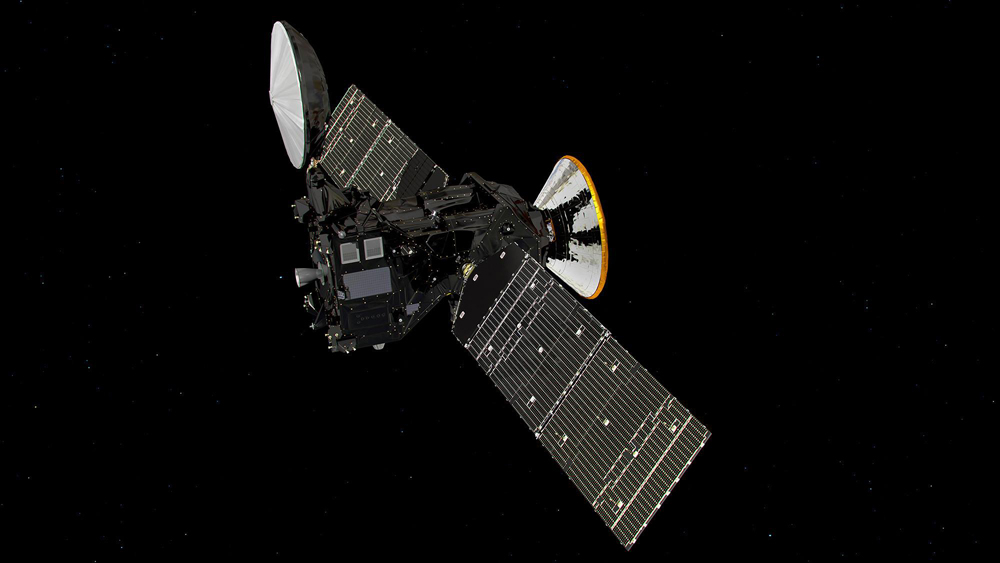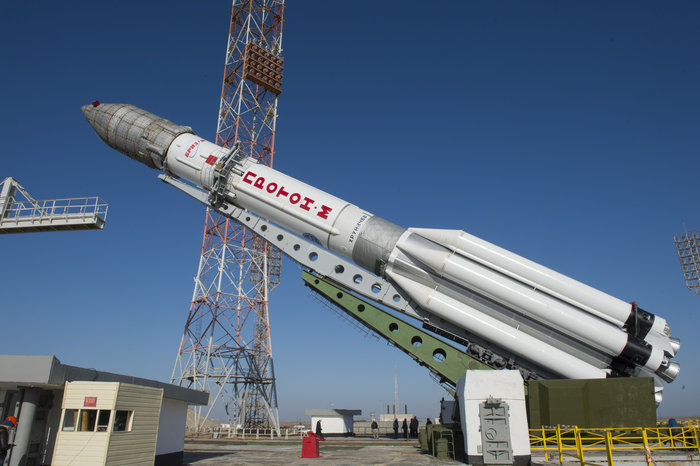
The ExoMars-2016 spacecraft will reach Mars in seven months.
RoscosmosOn March 14 at 12:31 p.m. a Proton-M rocket with Russian and European instruments on board lifted off from the Baikonur Cosmodrome in Kazakstan. The mission's primary goal is to find methane on the planet, a gas that is often a sign of primitive biological life. In addition, there will be an attempt to develop technologies for a soft landing amid dust storms.
The launch date wasn't selected at random. March 2016 is when Earth and Mars are closest, or about 55 million kilometers from each other, as opposed to the usual average distance of 225 million kilometers.
"This period is a 'window' of sorts,'' said Dr. Igor Mitrofanov, director of the department of nuclear planetology at the Institute of Space Research of the Russian Academy of Sciences. "This occurs once every two years and 50 days. The next time it will be possible to travel to Mars will only be in 2018. That's when the second stage of the ExoMars project will take place."
Mars has much in common with Earth: seasons of the year; as well as seasonal melting of polar ice caps and even snow, made of carbon dioxide. There are also clouds and water. Days on Mars resemble those on Earth. Mars is twice as small as Earth, but it has the highest volcano in the Solar System: 21 kilometers.
The goal of the 11 Russian and three European instruments fixed to the orbital and landing devices is to study Mars' atmosphere in more detail and find possible signs of life, such as methane. This gas often has biological origins; on Earth more than 90 percent of methane is derived from biological sources.
"We might find oases in which primitive creatures still exist, having developed there billions of years ago," Dr. Mitrofanov said.
 A Proton-M launch vehicle with the ExoMars-2016 research spacecraft. Source: ESA
A Proton-M launch vehicle with the ExoMars-2016 research spacecraft. Source: ESA
"Up until now all attempts to find methane were conducted with devices of limited sensitivity, but now much more powerful instruments are on their way to Mars, and with precision 100 times more powerful,'' said Dr. Alexander Tokhimovsky, a specialist at the Institute of Space Research. “We will really be able to determine whether or not methane is present and in what amount. Then, we can make our conclusions.''
The first stage of the mission will take about seven months. It will reach Mars in the middle of October, and three days before entering the planet's atmosphere the Schiaparelli landing module will be released from the Orbiter, after which it will descend to the Red Planet's surface.
The cost of the ExoMars mission is estimated at 1 billion euros and includes two stages -- ExoMars-2016, and ExoMars-2018. During the first stage Russia provided the rocket-carrier and half of the scientific instruments for the Trace Gas Orbiter (TGO), while the European Space Agency supplied the TGO itself, and the Schiaparelli lander.
For the TGO, Russia prepared the Atmospheric Chemistry Suite (ACS), which will study Mars' chemical composition and atmospheric structure, and the Fine Resolution Epithermal Neutron Detector (FREND), which will search for hydrogen and deposits of water ice. The Moscow Institute of Physics and Technology helped develop the data processing algorithms for analyzing the atmosphere in the ACS.
"Our system will remotely examine the content of the gases from orbit, as well as the temperature and the clouds, just as it is done with the Earth's meteorological satellites," said Dr. Oleg Korablev, scientific director of the ACS system. "The Schiaparelli lander will help develop technologies for a soft landing in dust storms. It is necessary to see how it will react in extreme conditions."
Dr. Korablev said that the TGO has clear scientific objectives, and with the help of Russian instruments it will study the planet's atmosphere. It will remain on Mars until 2022.
All rights reserved by Rossiyskaya Gazeta.
Subscribe
to our newsletter!
Get the week's best stories straight to your inbox